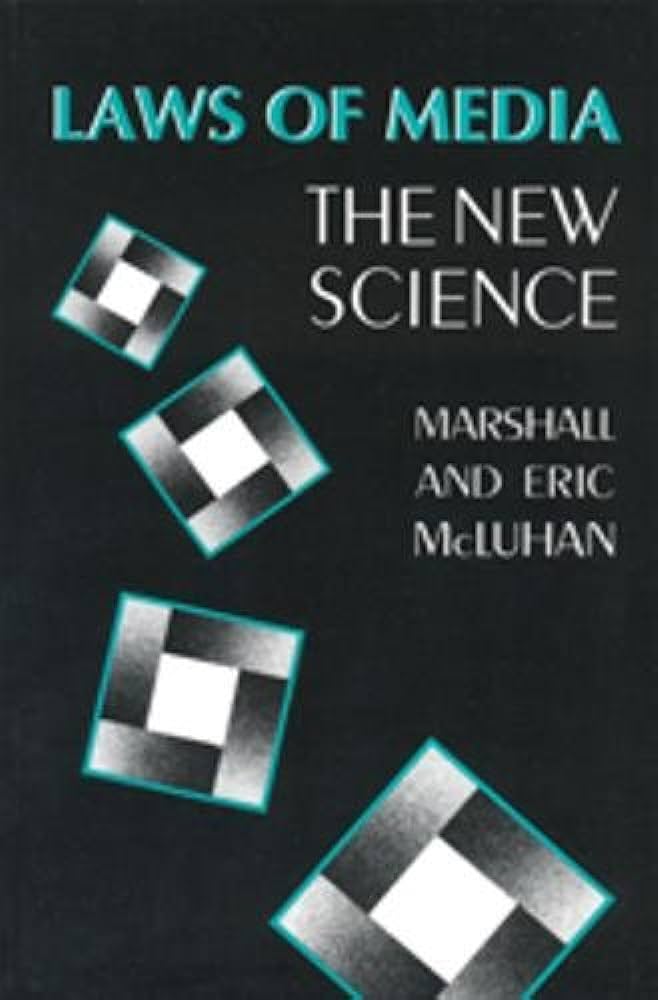This book represents a culmination of McLuhan’s life work in media theory. Published posthumously, this work delves into the laws governing media and their effects on human perception, cognition and society. Here we will dissect the fundamental principles presented in the text and assess their enduring relevance in the rapidly evolving landscape of media studies.

Understanding media as extensions
Central to McLuhan’s philosophy is the idea that media function as extensions of human faculties. He posits that each medium serves as an extension of a particular sense or ability, influencing the way we perceive and interact with the world. “Laws of Media” builds upon this concept, introducing the tetrad as a tool to analyze the transformative impact of media on society.
The Tetrad: unveiling media dynamics
The tetrad, comprised of four interrelated questions, serves as a conceptual framework to systematically analyze the effects of media. These questions are:
- What does the medium enhance or intensify?
- What does the medium make obsolete or displace?
- What does the medium retrieve or recover from the past?
- What does the medium reverse or flip into when pushed to its extreme?
By applying the tetrad to various media, McLuhan sought to unveil the intricate dynamics and consequences of technological innovations. This analytical tool provides a systematic approach to understanding the complex interplay between media and societal transformations.
Media ecology: the study of environments
McLuhan and Eric McLuhan expand on the concept of media ecology in “Laws of Media”, emphasizing the importance of studying media as environments rather than isolated artifacts. The authors argue that media create environments that shape human behavior, cognition and culture. This ecological perspective prompts scholars to examine the holistic impact of media systems, considering their interrelated effects on individuals and society.
The Global Village and the age of information
McLuhan explores the idea of the global village, a concept introduced in his earlier work “Understanding Media” (1964). The global village describes the interconnectedness brought about by electronic media, collapsing geographical distances and creating a sense of global interdependence. “Laws of Media” extends this concept to the burgeoning age of information, foreseeing the transformative impact of digital technologies on communication and culture.
“Laws of media: The new science” stands as a testament to Marshall McLuhan’s enduring legacy in media theory. The book offers a comprehensive framework for understanding the laws governing media and their profound influence on human experience. McLuhan’s insights continue to shape contemporary discussions on media, technology and culture, providing scholars and thinkers with a rich tapestry of concepts to navigate the ever-evolving landscape of media studies.